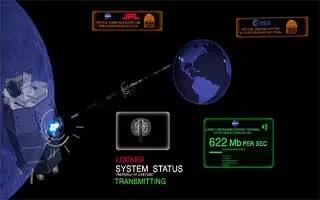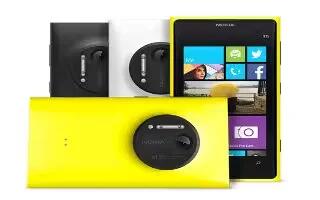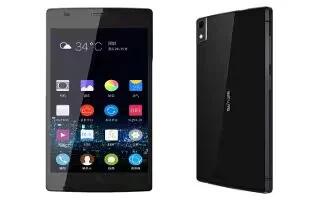NASA Sets Data Transmission Record At Moon

NASA Sets Data Transmission Record At Moon. Lasers area unit indisputably awe-inspiring, and NASA simply created them a trifle additional thus by zapping a best 622 Mb of information per second between the moon and earth as a district of its satellite optical maser Communications Demonstration (LLCD). Laser beams were shot from communication system at the White Sands take a look at Facility in New Mexico to the satellite Atmosphere and mud atmosphere adventurer (LADEE) satellite orbiting the moon, and also the results might herald promising new advances in region communication. Radio waves have long been the go-to possibility for causation info between craft and our planet, however the bigger information capability lasers will accommodate could create it doable for future missions to send higher resolution pictures and 3D video transmissions across two-way channels. to be told additional, take a peek at the press release.
Press Release
NASA Laser Communication System Sets Record with Data Transmissions to and from Moon
NASA’s Lunar Laser Communication Demonstration (LLCD) has made history using a pulsed laser beam to transmit data over the 239,000 miles between the moon and Earth at a record-breaking download rate of 622 megabits per second (Mbps).
LLCD is NASA’s first system for two-way communication using a laser instead of radio waves. It also has demonstrated an error-free data upload rate of 20 Mbps transmitted from the primary ground station in New Mexico to the spacecraft currently orbiting the moon.
“LLCD is the first step on our roadmap toward building the next generation of space communication capability,” said Badri Younes, NASA’s deputy associate administrator for space communications and navigation (SCaN) in Washington. “We are encouraged by the results of the demonstration to this point, and we are confident we are on the right path to introduce this new capability into operational service soon.”
Since NASA first ventured into space, it has relied on radio frequency (RF) communication. However, RF is reaching its limit as demand for more data capacity continues to increase. The development and deployment of laser communications will enable NASA to extend communication capabilities such as increased image resolution and 3-D video transmission from deep space.
“The goal of LLCD is to validate and build confidence in this technology so that future missions will consider using it,” said Don Cornwell, LLCD manager at NASA’s Goddard Space Flight Center in Greenbelt, Md. “This unique ability developed by the Massachusetts Institute of Technology’s Lincoln Laboratory has incredible application possibilities.”
LLCD is a short-duration experiment and the precursor to NASA’s long-duration demonstration, the Laser Communications Relay Demonstration (LCRD). LCRD is a part of the agency’s Technology Demonstration Missions Program, which is working to develop crosscutting technology capable of operating in the rigors of space. It is scheduled to launch in 2017.
LLCD is hosted aboard NASA’s Lunar Atmosphere and Dust Environment Explorer (LADEE), launched in September from NASA’s Wallops Flight Facility on Wallops Island, Va. LADEE is a 100-day robotic mission operated by the agency’s Ames Research Center at Moffett Field, Calif. LADEE’s mission is to provide data that will help NASA determine whether dust caused the mysterious glow astronauts observed on the lunar horizon during several Apollo missions. It also will explore the moon’s atmosphere. Ames designed, developed, built, integrated and tested LADEE, and manages overall operations of the spacecraft. NASA’s Science Mission Directorate in Washington funds the LADEE mission.
The LLCD system, flight terminal and primary ground terminal at NASA’s White Sands Test Facility in Las Cruces, N.M., were developed by the Lincoln Laboratory at MIT. The Table Mountain Optical Communications Technology Laboratory operated by NASA’s Jet Propulsion Laboratory in Pasadena, Calif., is participating in the demonstration. A third ground station operated by the European Space Agency on Tenerife in the Canary Islands also will be participating in the demonstration.
For more information click here NASA









 RSS - All Posts
RSS - All Posts